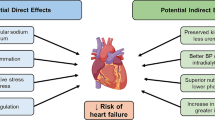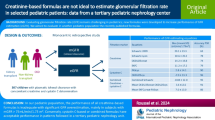Abstract
Previous reports identify a voltage dependent distal renal tubular acidosis (dRTA) secondary to lithium (Li+) salt administration. This was based on the inability of Li+-treated patients to increase the urine–blood (U–B) pCO2 when challenged with NaHCO3 and, the ability of sodium neutral phosphate or Na2SO4 administration to restore U–B pCO2 in experimental animal models. The underlying mechanisms for the Li+-induced dRTA are still unknown. To address this point, a 7 days time course of the urinary acid-base parameters was investigated in rats challenged with LiCl, LiCitrate, NaCl, or NaCitrate. LiCl induced the largest polyuria and a mild metabolic acidosis. Li+-treatment induced a biphasic response. In the first 2 days, proper urine volume and acidification occurred, while from the 3rd day of treatment, polyuria developed progressively. In this latter phase, the LiCl-treated group progressively excreted more NH4 + and less pCO2, suggesting that NH3/NH4 + became the main urinary buffer. This physiological parameter was corroborated by the upregulation of NBCn1 (a marker of increased ammonium recycling) in the inner stripe of outer medulla of LiCl treated rats. Finally, by investigating NH4 + excretion in ENaC-cKO mice, a model resistant to Li+-induced polyuria, a primary role of the CD was confirmed. By definition, dRTA is characterized by deficient urinary ammonium excretion. Our data question the presence of a voltage-dependent Li+-induced dRTA in rats treated with LiCl for 7 days and the data suggest that the alkaline urine pH induced by NH3/NH4 + as the main buffer has lead to the interpretation dRTA in previous studies.




Similar content being viewed by others
References
Batlle D, Gaviria M, Grupp M, Arruda JA, Wynn J, Kurtzman NA (1982) Distal nephron function in patients receiving chronic lithium therapy. Kidney Int 21:477–485
Alper SL (2010) Familial renal tubular acidosis. J Nephrol 23(Suppl 16):S57–S76 (review)
Arruda JA, Kurtzman NA (1980) Mechanisms and classification of deranged distal urinary acidification. Am J Physiol 239:F515–F523
Galla JN, Forrest JN, Hecht B, Kashgarian M, Hayslett JP (1975) Effect of lithium on water and electrolyte metabolism. Yale J Biol Med 48:305–314
Kim YH, Kwon TH, Christensen BM, Nielsen J, Wall SM, Madsen KM, Frokiaer J, Nielsen S (2003) Altered expression of renal acid-base transporters in rats with lithium-induced NDI. Am J Physiol Renal Physiol 285:F1244–F1257
DuBose TD Jr, Caflisch CR (1985) Validation of the difference in urine and blood carbon dioxide tension during bicarbonate loading as an index of distal nephron acidification in experimental models of distal renal tubular acidosis. J Clin Invest 75:1116–1123
Trepiccione F, Christensen BM (2010) Lithium-induced nephrogenic diabetes insipidus: new clinical and experimental findings. J Nephrol 23(Suppl 16):S43–S48 (review)
Trepiccione F, Pisitkun T, Hoffert JD, Poulsen SB, Capasso G, Nielsen S, Knepper MA, Fenton RA, Christensen BM (2014) Early targets of lithium in rat kidney inner medullary collecting duct include p38 and ERK1/2. Kidney Int 86(4):757–767
Christensen BM, Kim YH, Kwon TH, Nielsen S (2006) Lithium treatment induces a marked proliferation of primarily principal cells in rat kidney inner medullary collecting duct. Am J Physiol Renal Physiol 291:F39–F48
Christensen BM, Marples D, Kim YH, Wang W, Frokiaer J, Nielsen S (2004) Changes in cellular composition of kidney collecting duct cells in rats with lithium-induced NDI. Am J Physiol Cell Physiol 286:C952–C964
Christensen BM, Zuber AM, Loffing J, Stehle JC, Deen PM, Rossier BC, Hummler E (2011) alphaENaC-mediated lithium absorption promotes nephrogenic diabetes insipidus. J Am Soc Nephrol 22:253–261
Trepiccione F, Capasso G, Nielsen S, Christensen BM (2013) Evaluation of cellular plasticity in the collecting duct during recovery from lithium-induced nephrogenic diabetes insipidus. Am J Physiol Renal Physiol 305(6):F919–F929
Trepiccione F, Iena FM, Catalini L, Carpi FM, Koed M, Frische S (2017) Measurement of total CO2 in microliter samples of urine and other biological fluids using infrared detection of CO2. Pflugers Arch. https://doi.org/10.1007/s00424-017-1997-8
Sinning A, Radionov N, Trepiccione F, López-Cayuqueo KI, Jayat M, Baron S, Cornière N, Alexander RT, Hadchouel J, Eladari D, Hübner CA (2017) Chambrey R double knockout of the Na+-driven Cl-/HCO3-exchanger and Na+/Cl- cotransporter induces hypokalemia and volume depletion. J Am Soc Nephrol 28(1):130–139
Damkier HH, Nielsen S, Praetorius J (2006) An anti-NH2-terminal antibody localizes NBCn1 to heart endothelia and skeletal and vascular smooth muscle cells. Am J Physiol Heart Circ Physiol 290:H172–H180
Frische S, Zolotarev AS, Kim YH, Praetorius J, Alper S, Nielsen S, Wall SM (2004) AE2 isoforms in rat kidney: immunohistochemical localization and regulation in response to chronic NH4Cl loading. Am J Physiol Renal Physiol 286:F1163–F1170
Kim YH, Kwon TH, Frische S, Kim J, Tisher CC, Madsen KM, Nielsen S (2002) Immunocytochemical localization of pendrin in intercalated cell subtypes in rat and mouse kidney. Am J Physiol Renal Physiol 283:F744–F754
Nielsen J, Kwon TH, Praetorius J, Kim YH, Frokiaer J, Knepper MA, Nielsen S (2003) Segment-specific ENaC downregulation in kidney of rats with lithium-induced NDI. Am J Physiol Renal Physiol 285:F1198–F1209
Chambrey R, Trepiccione F (2015) Relative roles of principal and intercalated cells in the regulation of sodium balance and blood pressure. Curr Hypertens Rep 17(4):538
Praetorius J (2010) Na+-coupled bicarbonate transporters in duodenum, collecting ducts and choroid plexus. J Nephrol 23(Suppl 16):S35–S42 (review)
Gambaro G, Croppi E, Coe F, Lingeman J, Moe O, Worcester E, Buchholz N, Bushinsky D, Curhan GC, Ferraro PM, Fuster D, Goldfarb DS, Heilberg IP, Hess B, Lieske J, Marangella M, Milliner D, Preminger GM, Reis Santos JM, Sakhaee K, Sarica K, Siener R, Strazzullo P, Williams JC (2016) Consensus Conference Group. Metabolic diagnosis and medical prevention of calcium nephrolithiasis and its systemic manifestations: a consensus statement. J Nephrol 29(6):715–734 (Epub 2016 Jul 25)
Fabbrini P, Finkel K, Gallieni M, Capasso G, Cavo M, Santoro A, Pasquali S (2016) Light chains removal by extracorporeal techniques in acute kidney injury due to multiple myeloma: a position statement of the Onconephrology Work Group of the Italian Society of Nephrology. J Nephrol 29(6):735–746 (Epub 2016 Oct 18)
Trepiccione F, Gerber SD, Grahammer F, López-Cayuqueo KI, Baudrie V, Păunescu TG, Capen DE, Picard N, Alexander RT, Huber TB, Chambrey R, Brown D, Houillier P, Eladari D, Simons M (2016) Renal Atp6ap2/(Pro)renin receptor is required for normal vacuolar H+-ATPase function but not for the renin-angiotensin system. J Am Soc Nephrol 27(11):3320–3330
Mumtaz R, Trepiccione F, Hennings JC, Huebner AK, Serbin B, Picard N, Ullah AK, Păunescu TG, Capen DE, Lashhab RM, Mouro-Chanteloup I, Alper SL, Wagner CA, Cordat E, Brown D, Eladari D, Hübner CA (2016) Intercalated Cell Depletion and Vacuolar H+-ATPase Mistargeting in an Ae1 R607H Knockin Model. J Am Soc Nephrol 28(5):1507–1520. http://dx.doi.org/10.1681/ASN.2016020169
Gueutin V, Vallet M, Jayat M, Peti-Peterdi J, Cornière N, Leviel F, Sohet F, Wagner CA, Eladari D (2013) Chambrey R.Renal β-intercalated cells maintain body fluid and electrolyte balance. J Clin Invest 123(10):4219–4231
Saccà F, Puorro G, Brunetti A, Capasso G, Cervo A, Cocozza S, de Leva M, Marsili A, Pane C, Quarantelli M, Russo CV, Trepiccione F, De Michele G, Filla A, Morra VB (2015) A randomized controlled pilot trial of lithium in spinocerebellar ataxia type 2. J Neurol 262(1):149–153
Roscoe JM, Goldstein MB, Halperin ML, Wilson DR, Stinebaugh BJ (1976) Lithium-induced impairment of urine acidification. Kidney Int 9(4):344–350
Odgaard E, Jakobsen JK, Frische S, Praetorius J, Nielsen S, Aalkjaer C, Leipziger J Basolateral Na+-dependent HCO3- transporter NBCn1-mediated HCO3- influx in rat medullary thick ascending limb. J Physiol. 2004;555(Pt 1):205–218 (Epub 2003 Dec 12)
Jakobsen JK, Odgaard E, Wang W, Elkjaer ML, Nielsen S, Aalkjaer C, Leipziger J (2004) Functional up-regulation of basolateral Na+-dependent HCO3- transporter NBCn1 in medullary thick ascending limb of K+-depleted rats. Pflugers Arch 448:571–578
Lee S, Lee HJ, Yang HS, Thornell IM, Bevensee MO, Choi I (2010) Sodium-bicarbonate cotransporter NBCn1 in the kidney medullary thick ascending limb cell line is upregulated under acidic conditions and enhances ammonium transport. Exp Physiol 95:926–937
Karim Z, Szutkowska M, Vernimmen C, Bichara M (2006) Recent concepts concerning the renal handling of NH3/NH4+. J Nephrol 19(Suppl 9):S27–S32
Trepiccione F, Soukaseum C, Iervolino A, Petrillo F, Zacchia M, Schutz G, Eladari D, Capasso G, Hadchouel J (2016) A fate-map** approach reveals the composite origin of the connecting tubule and alerts on “single-cell"-specific KO model of the distal nephron. Am J Physiol Renal Physiol 311(5):F901–F906
Duong van Huyen JP, Cheval L, Bloch-Faure M, Belair MF, Heudes D, Bruneval P, Doucet A (2008) GDF15 triggers homeostatic proliferation of acid-secreting collecting duct cells. J Am Soc Nephrol 19:1965–1974
Ordonez NG, Spargo BH (1976) The morphologic relationship of light and dark cells of the collecting tubule in potassium-depleted rats. Am J Pathol 84:317–326
Bagnis C, Marshansky V, Breton S, Brown D (2001) Remodeling the cellular profile of collecting ducts by chronic carbonic anhydrase inhibition. Am J Physiol Renal Physiol 280:F437–F448
Acknowledgements
The authors thank Inger Merete Skrubbeltrang Poulsen and Helle Hoyer for excellent technical assistance with immunohistochemistry and western blotting and Mogen Koed for manufacturing the bicarbonate analyser. Financial support for this study was provided by the Danish National Research Foundation (Grundforskningsfonden), the Marie Curie Research Program (EU’s Sixth Framework Programme), the Lundbeck Foundation, The Danish Council for Independent Research—Medical Sciences, Aarhus University Research Foundation and AU-center: MEMBRANES.
Author information
Authors and Affiliations
Corresponding author
Ethics declarations
Conflict of interest
The authors have no conflict of interest.
Ethical statement
This study does not involve humans.
Animal care
This study involves only animal models, particularly rats. As stated in the method section, all the experiments have been performed in accordance to the license #2005/561–1032 issued by the Animal Experiments Inspectorate, Denmark.
Electronic supplementary material
Below is the link to the electronic supplementary material.
40620_2017_460_MOESM1_ESM.tif
Figure S1: Time course of the urinary lithium excretion. Lithium excretion during the 7 days of treatment. As expected urinary Li+ was detected exclusively in rats treated either with LiCl or LiCitrate. Li+ excretion was similar in these two group showing equal intake of lithium (*** is for p-value < 0.001 One-way ANOVA followed by Tukey’s multiple comparison test was used for statistics) (TIF 193 KB)
40620_2017_460_MOESM2_ESM.tif
Figure S2: Time-course of acid-base urinary parameters including all the groups. Treatment with NaCl or NaCitrate did significantly affect the urinary acid-base parameters (TIF 1073 KB)
40620_2017_460_MOESM3_ESM.tif
Figure S3: Pendrin expression after 7 days of treatment. Immunohistochemistry of kidney sections from rats treated for 7 days with LiCl enriched diet, LiCitrate enriched diet or normal food. Sections are labelled with an anti-pendrin antibody. The upper panel shows localization of pendrin exclusively in the renal CTX/OSOM. The lower panel shows the expected distribution of pendrin on the apical plasma membrane domain (TIF 2557 KB)
40620_2017_460_MOESM4_ESM.tiff
Figure S4: Time course of urinary potassium excretion and food intake. Time course of urinary potassium over creatinine excretion (A) and food intake (B) in control rats black circle) and in rats receiving food enriched with LiCl 40 mmole/Kg of dry food (open square) or equivalent lithium amount of LiCitrate (open triangle). * is for significant difference between control and LiCl group, § between Ctr and LiCitrate group. For panel A, One-way ANOVA followed by Tukey’s multiple comparison test was used for statistics, while Two-way ANOVA has been performed for food intake (TIFF 174 KB)
40620_2017_460_MOESM5_ESM.tif
Figure S5: Blue Comassie staining. Representative pictures from Comassie Blue gel from Cortex, ISOM and IM samples (TIF 850 KB)
Rights and permissions
About this article
Cite this article
Trepiccione, F., Altobelli, C., Capasso, G. et al. Lithium increases ammonium excretion leading to altered urinary acid-base buffer composition. J Nephrol 31, 385–393 (2018). https://doi.org/10.1007/s40620-017-0460-4
Received:
Accepted:
Published:
Issue Date:
DOI: https://doi.org/10.1007/s40620-017-0460-4




